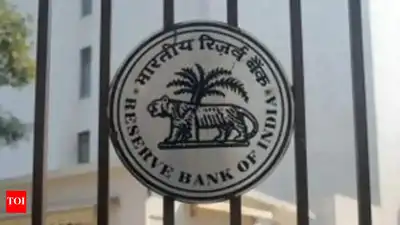MUMBAI: In a move that jolted markets and defied expectations, the Reserve Bank of India cut its benchmark policy rate by 50 basis points and announced a Rs 2.5 lakh crore liquidity infusion via a 100 basis point reduction in the cash reserve ratio (CRR). The CRR cut reduces the portion of deposits banks must park with the central bank, effectively freeing up funds to support credit growth.Governor Sanjay Malhotra framed the dual action as a response to shifting macroeconomic conditions, stating that the evolving growth-inflation dynamics warranted “not just continued policy easing, but also front-loading the rate cuts to support growth.”The surprise rate cut came as inflation projections were revised downward. Consumer price inflation for FY26 is now expected to average 3.7%, compared to an earlier forecast of 4%. Yet the central bank maintained its full-year GDP growth forecast at 6.5%, with no changes to its quarterly estimates.Malhotra acknowledged the challenges facing the economy, remarking that “while price stability is a necessary condition, it is not sufficient to ensure growth. A supportive policy environment is vital, and this is even more important during periods of high growth uncertainty, such as the current times that we are witnessing at the Reserve Bank.”The twin measures—rate cut and CRR reduction—resemble an adrenaline shot to the financial system. While the rate cut narrows banks’ interest margins, the CRR relief cushions balance sheets, enabling continued credit transmission even as loan rates decline.The six-member monetary policy committee voted 5:1 for the 50 basis point cut. Nagesh Kumar, Ram Singh, Rajiv Ranjan, Poonam Gupta and Malhotra backed the move. Saugata Bhattacharya dissented, favouring a more modest 25 basis point cut.Alongside the rate decision, the committee altered its policy stance from “accommodative” to “neutral.” Malhotra noted that “under the current circumstances, monetary policy is left with very limited space to support growth,” and said future decisions would hinge on incoming data.The cut in cash reserve ration will happen in four equal tranches of 25 basis points, each coming into effect from the fortnights beginning, September, 6, October 4, November 1 and November 29.The magnitude and context of the rate cut make it especially noteworthy. Central banks in most advanced economies have adopted a holding pattern or continued tightening in response to persistent inflation. The Federal Reserve has kept its target range at 4.25%-4.50% since late 2024. The Bank of England, following a rate cut in May 2025, has held steady at 4.25%. The Bank of Japan remains focused on growth and currency stability, keeping its rate at 0.50% after a hike in January. The Reserve Bank of Australia and the Reserve Bank of New Zealand each cut rates in May, to 3.85% and 3.25%, respectively, and are expected to remain on hold. Sweden held rates at 2.25% in May, signalling a dovish bias, while Canada paused after a March cut to 2.75%, citing domestic pressures and global trade uncertainty.RBI’s downward revision to inflation forecasts is concentrated in the first half of FY26. CPI inflation is now expected to dip to 2.9% in Q1, down from April’s forecast of 3.7%, and to 3.4% in Q2, compared to the previous 3.9%. For Q3, the forecast has been nudged up to 3.9% from 3.8%, while Q4 remains unchanged at 4.4%.Malhotra also sought to allay investor concerns about India’s external position, asserting that “India continues to be an attractive investment destination.” He highlighted a 14% rise in gross foreign direct investment inflows. The recent softness in net FDI, he said, reflected repatriations by large industrial firms—an indicator, in his view, of a mature financial system that allows orderly exits.








